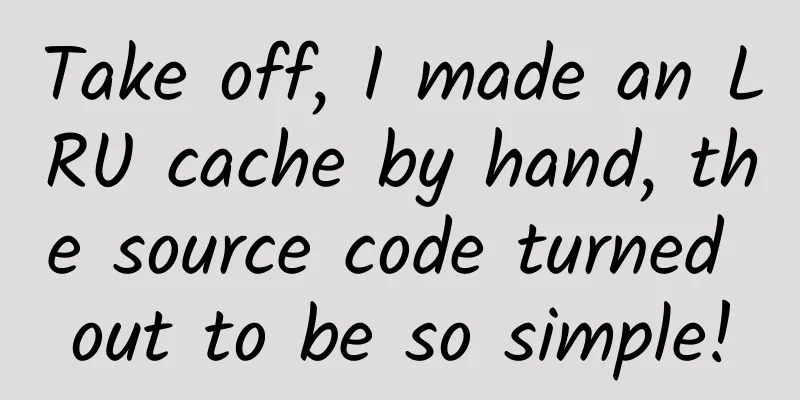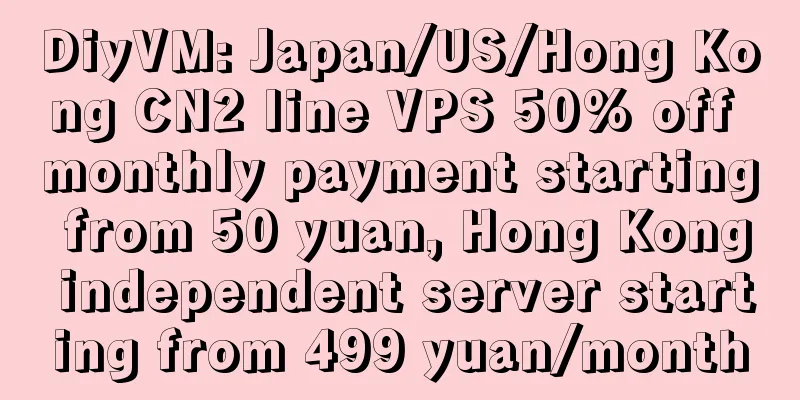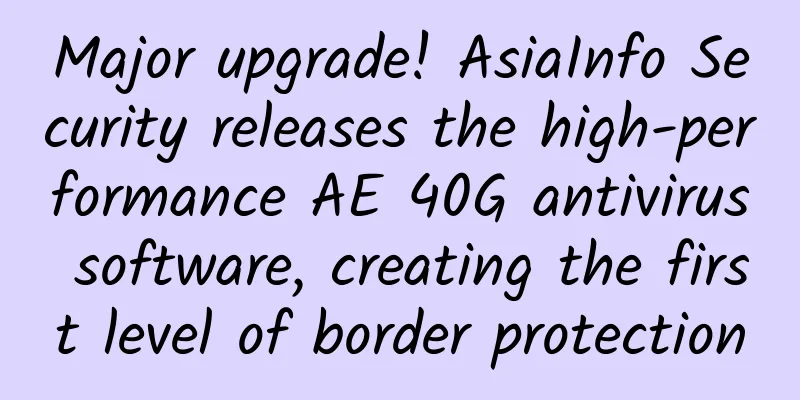Take off, I made an LRU cache by hand, the source code turned out to be so simple!

LRU IntroductionLRU is the abbreviation of Least Recently Used, which is a commonly used page replacement algorithm that selects the pages that have not been used for the longest time for elimination. Simply put, for a set of data, for example: int[] a = {1,2,3,4,5,6}, if the numbers 1 and 2 are often used, they will be ranked after 3,4,5,6, and the array becomes as follows: int[] a = {3,4,5,6,1,2}. If a number is not often used, it will be ranked first! The LRU algorithm is generally used for querying hot data, such as news information. The more news is viewed by users, the more likely it is to be viewed by other users. For news that is rarely accessed, it is basically stored in the ocean! In Java, there is such a collection class that implements this function, it is LinkedHashMap! Introduction to LinkedHashMapWe all know that in Java collections, LinkedHashMap inherits from HashMap, and the underlying data structure is a doubly linked list. Unlike HashMap, LinkedHashMap has a parameter accessOrder in the initialization phase, which defaults to false. public class LinkedHashMap<K,V> If true is passed in, the most recently accessed elements will be placed at the end of the linked list in the order of access. The test is as follows: public static void main(String[] args) {The output is as follows: acessOrderFalse:{1=1, 2=2, 3=3, 4=4}It can be seen that when we set accessOrder to true, frequently accessed elements will be placed in the front! We use this feature to implement an LRU cache using LinkedHashMap as follows:
Among them, removeEldestEntry() means that if it returns true, the element that has not been used recently will be removed. If it returns false, no operation will be performed. This method will be called every time add() is performed. Create an LRU cache class with the following content: public class LRULinkedHashMap<K, V> extends LinkedHashMap<K, V> {Test use: public static void main(String[] args) {The output is as follows: Initial cache content: {1=a, 2=b, 3=c}Initial cache content: {1=a, 2=b, 3=c} After querying the element with key 2, cache content: {1=a, 3=c, 2=b} After adding a new element, cache content: {3=c, 2=b, 4=d} |
<<: What are the deployments and arrangements for 5G in 2022? MIIT responds
Recommend
iWebFusion: $9.38/month KVM-4GB/30GB/2TB/Los Angeles Peer1&Psychz, upgradeable to 10G bandwidth
iWebFusion (or iWFHosting) is a subsidiary of the...
[Black Friday] SpartanHost Dallas VPS 50% off, optional AMD or E5 series, 10Gbps bandwidth, high-security VPS
SpartanHost has launched the 2023 Black Friday pr...
Next generation WiFi: There is still signal one kilometer away!
[[433169]] The Wi-Fi Alliance announced on Tuesda...
"Connecting Everything with Light, Sense the Extraordinary" Huawei held a seminar for core partners of industry perception distribution
On May 10, Huawei's Industry Perception Distr...
Industry 4.0 drives the need for 5G and private networks in the enterprise
According to GlobalData, Europe is leading the w...
LOCVPS 20% off, Japan/Singapore/Russia CN2/Korea CN2/Hong Kong CN2/US CN2 etc. monthly payment starts from 29.6 yuan
LOCVPS is a long-established Chinese hosting comp...
Industrial IoT is so important to enterprises that future security is also a focus
Today, the use and growth of mobile technology ha...
IEEE technical white paper officially released, lossless network research enters a new stage
Recently, the "IEEE 802 Nendica Report: The ...
How to protect your privacy in a zero-trust network? Introduction to the oblivious random access machine
When we watch spy movies, we often see undergroun...
How difficult it is to increase network speed and reduce fees
In response to the livelihood issue of "spee...
Shandong issues six standards for e-government cloud platform construction
Recently, Shandong issued six standards in the fi...
What is the difference between SNMP Trap and Syslog?
System administrators use Syslog or SNMP Trap for...
edgeNAT Hong Kong VPS host simple test
We have shared edgeNAT several times in the tribe...
Imitate Spring to implement a class management container
Overview The original intention of the project wa...
Understand enterprise AAA authentication, authorization, billing services and configuration in one article
Hello everyone, I am Bernie, an IT pre-sales engi...









